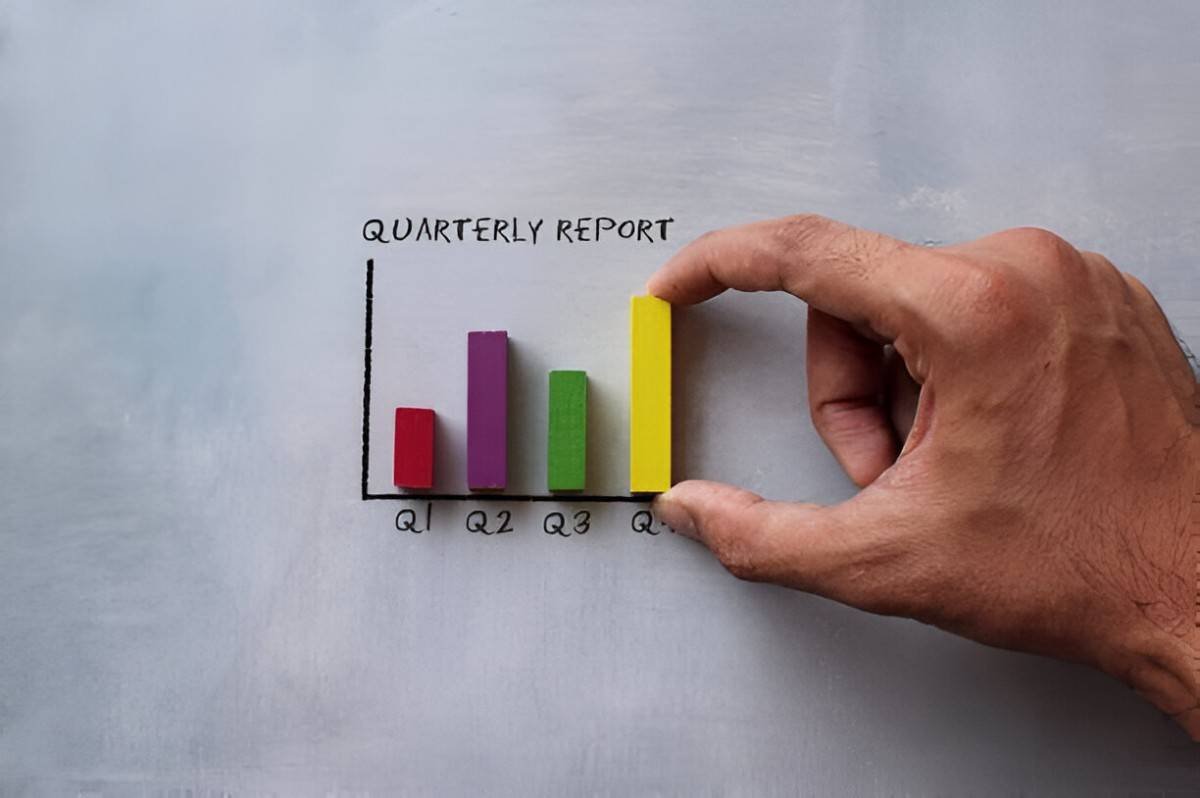Quarterly reports play a crucial role in the world of finance and accounting. These reports provide a snapshot of a company’s financial health, offering stakeholders—including investors, analysts, and company management—a clear view of the company’s performance over the past three months. As a result, quarterly reports are among the most critical documents a company can generate, influencing investment decisions, strategic business moves, and market trends. In this article, I will dive deep into quarterly reports, explaining their purpose, key components, and why they are so important.
Table of Contents
The Purpose of Quarterly Reports
Quarterly reports are designed to keep stakeholders informed about a company’s financial position and performance. These reports are typically produced every three months and provide a detailed overview of various financial metrics. They serve several purposes:
- Transparency: Quarterly reports promote transparency by providing stakeholders with a consistent, reliable, and up-to-date picture of a company’s financial performance.
- Performance Evaluation: By breaking down performance over short periods, quarterly reports allow for a detailed assessment of a company’s financial health and operational efficiency.
- Compliance: In the United States, public companies are legally required by the Securities and Exchange Commission (SEC) to file quarterly reports, known as Form 10-Q, to ensure compliance with financial reporting regulations.
- Decision-Making: Investors, creditors, and management rely on quarterly reports to make informed decisions. Investors use these reports to gauge the company’s profitability, risk, and potential for growth, while creditors assess the company’s ability to repay debt. Company management, on the other hand, may use quarterly data to adjust strategies and optimize operations.
- Market Reactions: Quarterly reports influence stock prices. Positive earnings and performance often drive stock prices higher, while disappointing results can lead to sharp declines. The report, therefore, plays an essential role in shaping market sentiment.
Key Components of a Quarterly Report
A typical quarterly report consists of several essential components. Each section provides crucial insights into the company’s financial performance and operational success. Below is an in-depth look at the most common sections included in a quarterly report:
1. Income Statement (Profit and Loss Statement)
The income statement summarizes a company’s revenues, expenses, and profits over the quarter. It shows the company’s ability to generate profit through its operations and provides insights into how well the business is managing its expenses. The key components of an income statement include:
- Revenues: The total income from sales of products or services during the quarter.
- Cost of Goods Sold (COGS): The direct costs attributable to the production of goods sold.
- Gross Profit: Revenues minus COGS, which represents the profit the company made after covering direct production costs.
- Operating Expenses: These include selling, general and administrative expenses (SG&A), which are the indirect costs of running the business.
- Operating Income: The company’s earnings from its core business operations, excluding other income or expenses.
- Net Income: The final profit after subtracting all costs, taxes, and other expenses. This is the most widely used measure of a company’s profitability.
A sample income statement might look like this:
| Revenue | $5,000,000 |
|---|---|
| Cost of Goods Sold | $2,000,000 |
| Gross Profit | $3,000,000 |
| Operating Expenses | $1,200,000 |
| Operating Income | $1,800,000 |
| Net Income | $1,500,000 |
2. Balance Sheet
The balance sheet provides a snapshot of the company’s financial position at the end of the quarter, detailing its assets, liabilities, and shareholders’ equity. The balance sheet must always balance, meaning the total assets should equal the total liabilities plus equity. The basic components of the balance sheet are:
- Assets: These are what the company owns and can be divided into two categories:
- Current Assets: Assets that are expected to be converted into cash or used up within one year (e.g., cash, receivables, inventory).
- Non-Current Assets: Long-term assets that the company expects to hold for more than a year (e.g., property, plant, and equipment, intangible assets).
- Liabilities: These represent the company’s obligations and debts.
- Current Liabilities: Short-term debts or obligations due within a year (e.g., accounts payable, short-term loans).
- Non-Current Liabilities: Long-term obligations (e.g., long-term debt, pension liabilities).
- Equity: The value of the shareholders’ stake in the company, calculated as assets minus liabilities.
Here’s a simple example of a balance sheet:
| Assets | Liabilities and Equity | ||
|---|---|---|---|
| Current Assets | $3,000,000 | Current Liabilities | $1,000,000 |
| Non-Current Assets | $7,000,000 | Non-Current Liabilities | $2,000,000 |
| Total Assets | $10,000,000 | Equity | $7,000,000 |
| Total Liabilities and Equity | $10,000,000 |
3. Cash Flow Statement
The cash flow statement provides an overview of the company’s cash inflows and outflows over the quarter. It helps assess the company’s liquidity and ability to meet its short-term obligations. The cash flow statement is divided into three main sections:
- Operating Activities: Cash flows from the core business operations, such as receipts from customers and payments to suppliers.
- Investing Activities: Cash flows related to the acquisition and disposal of long-term assets, such as purchasing equipment or selling investments.
- Financing Activities: Cash flows from borrowing and repaying loans, issuing stock, or paying dividends.
A sample cash flow statement might look like this:
| Cash Flow from Operating Activities | $1,200,000 |
|---|---|
| Cash Flow from Investing Activities | -$500,000 |
| Cash Flow from Financing Activities | $300,000 |
| Net Cash Flow | $1,000,000 |
4. Earnings Per Share (EPS)
Earnings Per Share is a key performance metric for investors. It measures the portion of a company’s profit allocated to each outstanding share of common stock. The formula for calculating EPS is:
\text{EPS} = \frac{\text{Net Income} - \text{Preferred Dividends}}{\text{Weighted Average Shares Outstanding}}For example, if a company has a net income of $1,500,000, no preferred dividends, and 1,000,000 shares outstanding, the EPS would be:
\text{EPS} = \frac{1,500,000}{1,000,000} = 1.505. Management Discussion and Analysis (MD&A)
The MD&A section provides management’s perspective on the financial results. It typically includes insights into the company’s performance, challenges faced, strategies for growth, and expectations for future performance. The MD&A helps stakeholders interpret the numbers presented in the financial statements by providing context.
The Importance of Quarterly Reports
Quarterly reports are indispensable for several reasons:
- Investor Confidence: Regular, transparent financial reporting builds trust among investors. Positive quarterly results often lead to an increase in stock prices, while poor performance can cause significant declines. Quarterly reports, therefore, help investors gauge the health and prospects of a company.
- Regulatory Compliance: Public companies in the United States are required by the SEC to file quarterly reports. Failure to do so can result in fines or even the delisting of the company’s shares from stock exchanges.
- Strategic Adjustments: Companies can use quarterly reports to assess their financial position and make necessary strategic adjustments. If profits are declining, a company might decide to cut costs, restructure operations, or invest in new growth opportunities.
- Market Comparison: Quarterly reports enable analysts and investors to compare the performance of different companies within the same industry. These comparisons help assess the competitive positioning of a company.
- Forecasting and Planning: By reviewing trends in quarterly reports, management can forecast future performance and plan for growth. Additionally, investors can use the data to make projections about the company’s stock price and overall market position.
Conclusion
Quarterly reports are essential documents for assessing a company’s performance. They provide a comprehensive picture of a company’s financial health, covering its revenues, expenses, assets, liabilities, and overall financial position. By understanding these reports, investors, analysts, and management can make informed decisions that drive the success of the business. While the process of preparing and analyzing these reports may seem daunting at first, the key components and their importance in the financial world are undeniable. By breaking down these reports and understanding each part, I have gained a deeper appreciation for how they guide businesses, investors, and the broader economy.





